7 Steps To Optimize Your Website for SEO

Article by Danielle Guerrero
Graphics Design by Kirsten Tumbokon
You’ve finally decided to have a website for your business. It’s really exciting for the first few days. You make some tweaks, add some designs and copy to your website, and promote it on different social media platforms.
But then, days and months pass by. You’re still not getting anything more than a few bounces and complaints. Maybe it’s time you take a larger leap and optimize your website.
For those who are new to the concept, optimization is the process of increasing the visibility of your website by taking measures to rank high in search engine rankings. It is beneficial to optimize your webpage because it primarily results in a surge of traffic. Optimizing your website is the icing on top of the cake — the vital step to ensure that the effort you’ve poured into your content and web design reaches your target audience.
In order to optimize your website, you need to tackle several facets: content writing, market research, information technology, and human behavior. Let’s dive deeper into what you’ll need to do to optimize your website with the following checklist.
7 Things You Should Consider When Optimizing Your Website
1. High-Quality Content Using Keywords
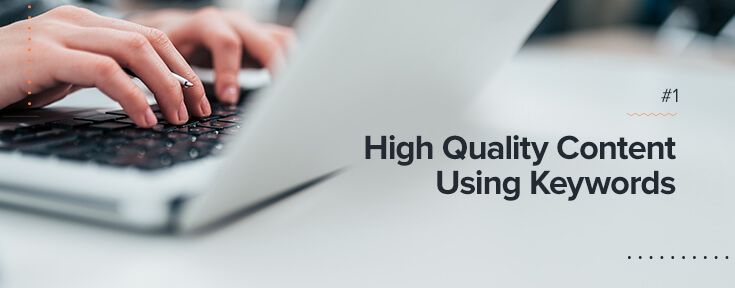
Write for humans first, search engines second. Your content is your building block that supports your website. No matter how appealing other aspects are, if your content is not deemed to be of high quality and value, visitors will not have any impulse to visit your website.
The inherent value of your content lies in its tackled topic. This value should be in line with what your intended audience is looking for. Thus, they strive to offer content that they are likely to search for. Use related words that appear more often in search results. In addition, proper wordings, grammar, and spelling should never be taken for granted.
In your attempt to optimize your website through targeted keywords, you might awkwardly place keywords. Do not sacrifice the flow of your content. Carefully plan the distribution of these keywords by using secondary and tertiary keywords to avoid repetition.
2. Image Optimization

Images contribute to your clients’ first impression more than texts. After all, images are larger and easier to see in general. Whenever possible, pair your texts with images that serve as a summary of what you’ve written. They primarily reinforce what’s written in a visual form. Furthermore, if you’re able to encapsulate a paragraph in a text, then the ideas are guaranteed to capture your reader’s attention even if they don’t read the whole text.
With this in mind, you should pay close attention to the quality of the images you post to your site. Optimize images before uploading. Any graphics should not be too large as this will affect the loading speed of your page, causing potential clients to lose patience and bounce. Images should not be too small as well. Small images will result in pixelated images or blurry details when enlarged.
Alt text (Alternative texts) or alternative descriptions boost your photos’ SEO. These are descriptions of pictures that are also directly encoded. Bots cannot understand images itself, but with alt tags, bots will be able to understand what this image is for. Below is an example of an alt text on images.
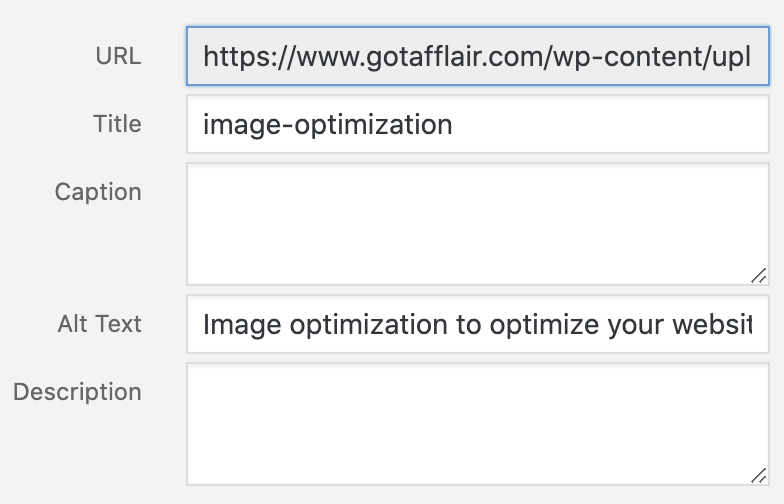
It is also important to employ the best Alt description practices to take advantage of image searches. To better demonstrate its importance, think of a client that instantaneously came across an advertisement for your product. They were only able to take a glimpse of your product and retained only a few details. After some time, they come back to the memory and try to look up the product through hazy descriptions.
“Black bag of potato chips pizza flavor the Philippines” — they’d enter into the search bar. It turns out, what they are looking for is an imported product in your international grocery store and the name of the chips is in a foreign script.
Thankfully, because you were able to use an appropriate alt description, they found your image in the top searches and proceeded to navigate through your online ordering tab.
3. Write a Unique Title and Meta Description
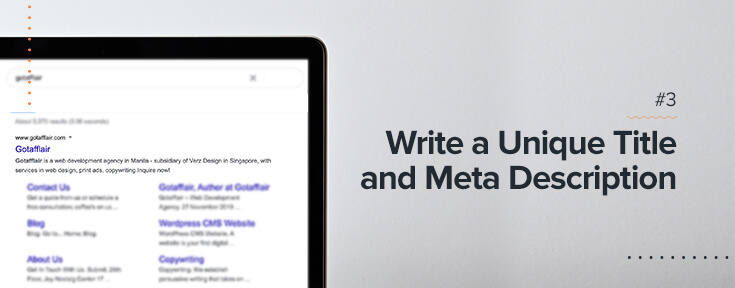
When users run a search on search engines, they are provided with a number of title tags and meta descriptions on a page. Although there is a higher chance of getting page visits if your site is at the top of the results page, they won’t mindlessly click on your site.
Users browse for keywords and relevant descriptions that match what they are looking for. In a competitive search page, you have the upper hand if your title tags and meta descriptions capture the keywords effectively.
Search queries generate bolded keywords in the results page for easier scanning. Conveniently, typical eye movement scans from top to bottom then left to right. This means that if your keywords are generally placed near the start of the title tag, it is likely to be noticed first.
Next, meta descriptions just below the title tag are read for relevance. If your meta descriptions are just snippets of your content with random keyword placement, it’s most likely a questionable click. But if you craft your meta descriptions in such a way that it answers the 5 Ws and 1 H, then it appeals as a relevant result. To make it easier, just ask yourself, “Does my meta description actually describe my primary keyword?”
4. Improve Page Load Speed
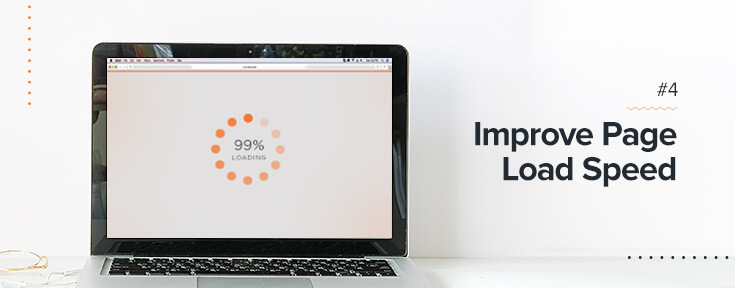
Page loading speed is one of the vital things that you should not forget when you optimize your website. Page load speeds have been becoming increasingly fast in the past years, however, it still takes an average of 15 seconds for websites to load. This is still considered slow for any webpage and the bounce rate would still be high. Your visitors are likely to leave if your page does not load within the ideal loading time of 3 to 4 seconds.
There are many technical ways to improve your page load speed such as deferring JavaScript loading, enabling compression, lazy loading, and compressing image sizes. However, an overarching theme is having a reliable hosting provider and a great overall web design. Here’s where we can help. We offer web design packages that are tailored to your needs. Leave the technical stuff to us.
5. Practice Link Building
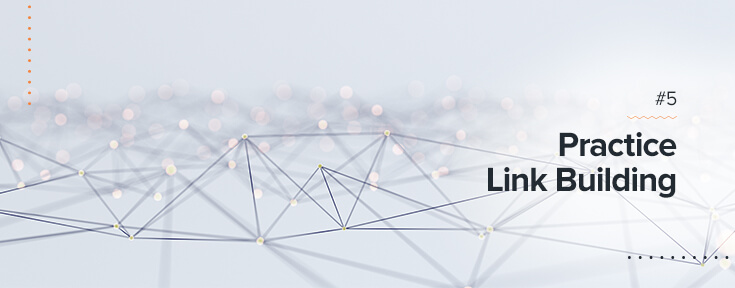
A part of good User Experience is smooth navigation within your site, which means that other pages should be accessible within a few clicks. As such, hyperlinks should be placed in immediately noticeable parts of your website. However, for your benefit, hyperlinks should be towards the end of your content for visitors to at least scan one page before moving to another.
Isn’t it counter-intuitive to provide links to external sites? Instead of driving traffic to your own website, you redirect your visitors to a potential competitor in search engine rankings. But how does link building help optimize your website? Surprisingly, hyperlinking to external pages actually improves your SEO ranking since search engine algorithms actually reward your site for hyperlinks to quality sites.
Take this with a grain of salt and think critically about the placement of your external hyperlinks. Like internal hyperlinks, external hyperlinks should not take away your visitors before they check out your page.
6. Reduce the Number of Plugins
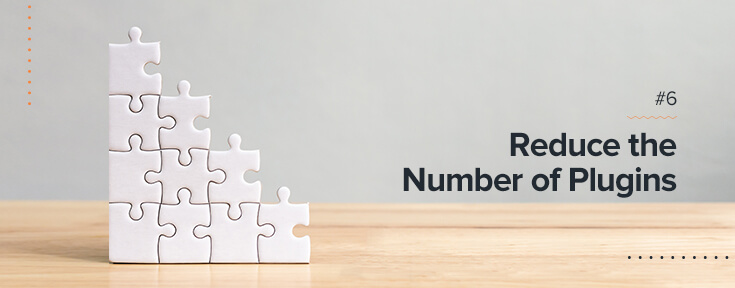
Plugins give your site additional support for various functions but a discouraging downside is that plugins may behave unpredictably. Before installing a plugin, make sure that it has been rated high and is up-to-date. Low rated plugins may slow down your site and affect other plugins.
Poorly developed plugins may cause security issues or mess with your site’s overall performance. When choosing a plugin to install, opt for a high rated, powerful, and multipurpose plugin. This will minimize the number of plugins you will have to install and reduce the chances of your security being compromised.
7. Choose a Reliable Hosting Provider

Last but most important of all, choose a reliable hosting provider. Everything mentioned before goes to waste if your hosting provider cannot provide the best uptime, speed, and security that will facilitate prior optimization.
No matter how efficient your keyword optimization is, if your website is down when search engine bots crawl and rank websites, then your SEO ranking will not increase. Even if your title tag and meta description gets many clicks, if it redirects to a down page, you don’t only lose potential clients but also, your brand reputation is hurt.
As for UX, slow websites often result in pogo-sticking (visitors going back to search results page). A slow-loading page goes against fast-scanning behavior causing yet again, loss of potential clients.
And most importantly, your website should be secure to protect your data. You can never sacrifice the time and effort poured into your content and web design for the cost of good hosting. It is definitely a myth that only prominent websites are targets of hacking. Anyone can be a victim of cybersecurity attacks so don’t compromise. Invest in a trusted hosting provider.
Ready to optimize your site? Gotafflair can help. Contact us at 7798 8195 or email us at sales@gotafflair.com today!


